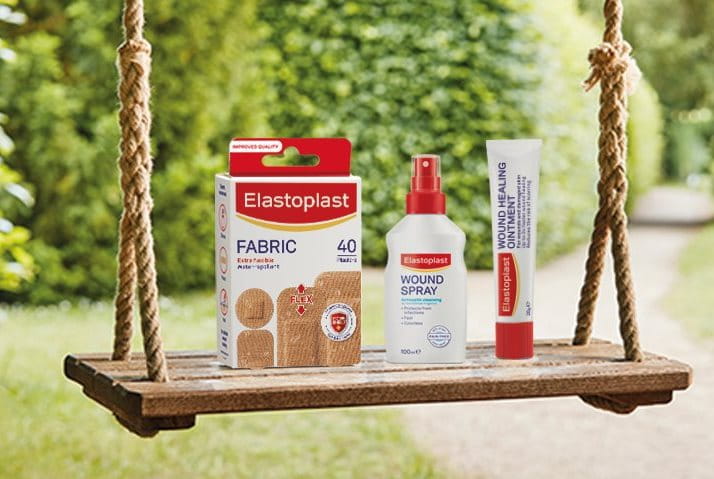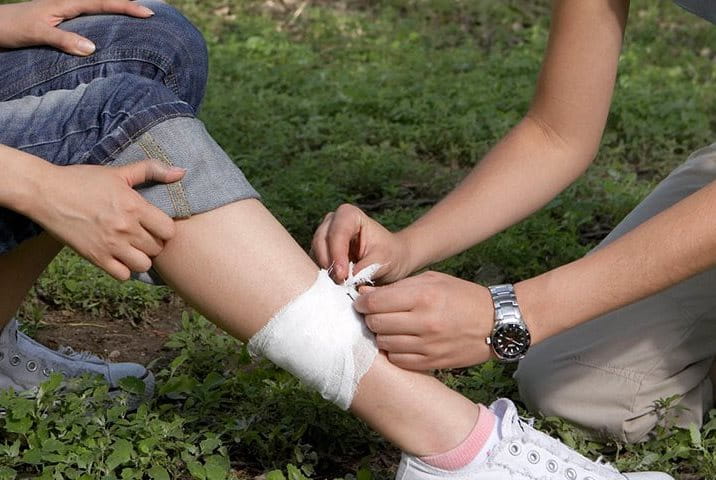Our kitchen and knife safety tips will help prevent injuries for you and your family. If you've suffered a cut while chopping or suffered a burn from cooking, find out how to treat your injury safely with our helpful guide.
Our kitchen and knife safety tips will help prevent injuries for you and your family. If you've suffered a cut while chopping or suffered a burn from cooking, find out how to treat your injury safely with our helpful guide.
10 tips for health and safety in the kitchen
A cut, abrasion or burn can easily happen in the kitchen. To reduce the risk of accidents it's important to pay attention to what's happening, especially when cooking with children. Here are some tips to follow:
1: Practice good hygiene
Before cooking ensure your kitchen is clean and tidy. Wash your hands before and after preparing food, especially if you're handling raw meat or fish. If you're cooking with children, teach them not to lick their fingers or any utensils because this can spread germs and bacteria.
2: Wear sensible clothing and footwear
Health and safety in the kitchen starts with your choice of clothing. Avoid clothes that are loose or too big, as baggy sleeves can catch fire or tug at pots and pans. Long hair should be tied up, while scarves and jewellery are also dangerous as they may get caught in machinery such as mixer blades. Non-slip shoes or socks should be worn to avoid slips.
3: Keep children and pets away
Unless you're actually teaching children about cooking, you should tell them to keep out of the way when necessary. Warn them about hot appliances and boiling water. Similarly, pets should be kept away from the kitchen because they can be trip hazards, especially if they're prone to lying on the floor or at your feet.
4: Mise en place
Arguably the most important tip for kitchen safety, every professional chef sticks to “Mise en place”. The meaning of the French phrase “Mise en place”, which translates to “everything in place”, is about being organised. Make sure you know where all of your required tools are, measure your ingredients before you start cooking and keep your spices within reach.

Oven gloves must be used when removing food from the oven, or the microwave if it's been in there for an extended amount of time. Remember scalding can occur from hot steam as well, so be careful when lifting a lid off a boiling pot.
Children should always be supervised by an adult to avoid a burn from cooking. Teach them not to reach over a hot burner to another pan, and to never handle or eat burning hot food.
Think of tongs as an extension of your hand, they'll protect your fingertips from injury and give you maximum grip when flipping or stabilising food. Professional chefs will often be seen with a pair of tongs, usually gripped low down on the handle for maximum control.
7: Turn pot handles away
Burns from scalding are one of the most common injuries in the kitchen, so make sure you turn pot handles away from the front of the stove. This prevents children from pulling them or adults accidently knocking them off. Try to use the back hobs whenever possible.
8: Be careful using machinery
Kitchen equipment can pose many hazards. Be especially careful using machinery involving blades, and never use your fingers to release something caught in a food processor or mixers. Unplug the machine and use a utensil instead of your hands. Teach children to always switch off and unplug electrical appliances when they're not being used, as they pose a fire risk.
9: Keep a tea towel handy
A professional chef will tell you to always have a towel tucked into your apron or slung over your shoulder. This will come in handy if you need to hold a hot lid, dry your hands or wipe a spillage.
10: Wipe up spills and wash up as you go
Spillages happen easily in the kitchen while you're multitasking, but it's important to clean up water, oil or grease as soon as possible to prevent slips. As well as washing their hands regularly, get children in the habit of washing and drying their utensils after use.
Handling knives and knife safety
We've covered some general kitchen safety guidelines above, but handling knives properly is vital to prevent injuries while cooking. Here are the most important knife safety tips:
- Keep your knives sharp: Dull knives can slip and actually make cutting much more difficult. Sharper blades cut better and don’t cause injuries as often.
- Invest in good quality tools: Handling poorly-functioning knives or knives that are dull should not have a place in your kitchen. Remember to choose the right knife for the task at hand.
- Ensure your chopping board is secure: Chopping boards that slide around are extremely dangerous when you’re holding a knife and trying to chop something. If it doesn’t have proper grip, put a damp paper towel underneath.
- Give the food a flat surface: Cutting the ends off food like circular food like onions, melons and tomatoes provides a flat surface, allowing more control as you chop.
- Always slice away from your body: A knife can slip and cut you, so this reduces the risk.
- Take your time: Practice makes perfect, so allow yourself some time to get used to chopping and work slowly.
- Curl your fingers while chopping: Hold the food underneath your fingertips and use your knuckles to guide the blade.
- Keep your knives clean: Handling knives with oily or greasy handles reduces the grip, increasing risk of injury.
- Don't leave knives lying around: Once you're finished, clean the knife and put it away immediately, or at least out of reach of children. Never leave it in a sink full of soapy water because someone can cut themselves when washing up.

Treating injuries in the kitchen
How to treat a burn from a hot pan
Burns from cooking are the most common kitchen injury. It's important you act fast and safely if you suffer a minor burn from a hot pan:
- To prevent further injury, remove the source of the heat.
- Place the affected area under cool running water for 10 to 15 minutes, or until the pain eases. Alternatively a cool, clean flannel should work.
- In case of swelling, remove tight clothing or jewellery.
- Clean the affected area with Elastoplast Wound Spray to prevent infections. Gently dry the burn and apply a thin layer of Elastoplast Wound Healing Ointment to support the healing process.
- Cover the burn with a plaster or bandage.
- Don't burst the blister. Should it break, clean it with Elastoplast Wound Spray.
To help prevent burns use a pair of reliable oven gloves.
How to treat a scald from boiling water
A scald is caused by something wet, like steam or hot water. Incidents involving hot water can cause a lot of damage to your skin.
Scalds typically occur from knocking over a pot of boiling water or getting splashed when lifting the lid. If you’ve suffered one, follow our step-by-step guide on how to treat a scald from boiling water:
- Remove the source of the heat to prevent further injury.
- Place the affected area under cool running water for at least 20 minutes. If the burn covers a large area of your body, don't submerge yourself in cool water as this may cause a loss of body heat.
- Remove jewellery or tight clothing in case of swelling.
- Use Elastoplast Wound Spray to remove bacteria, then carefully dry the burn. Applying a layer of Elastoplast Wound Healing Ointment supports the healing process.
- Cover the burn with a plaster, bandage or clean cloth.
- If a blister develops, do not burst it.
What to do if you've sliced your finger with a knife

Sliced your finger with a knife? This common kitchen injury can occur when chopping food or even washing up with a stray knife hidden by soapy water.
Follow these steps if blood is oozing from the cut:
- Wash the wound with Elastoplast Wound Spray, or soap and warm water.
- As long as blood isn't pouring out, squeeze a bit extra out to help flush out any bacteria.
- Use a towel, cloth or gauze bandage to control the bleeding and apply pressure.
- Apply a blaster once the bleeding has stopped.






